I lift a sandal on the back porch, and several insects go scurrying away. I pick lettuce leaves and more go tumbling out of the leaves. They’re everywhere this year: under the car, in house cracks, even in clothing. Earwigs.
When you’re looking, local nature always holds surprises. Seeing a new backyard bird or encountering something unexpected like mating snakes is always a delight. It might be a stretch to call an abundance of earwigs delightful. But even a pest species can hold surprises for a curious naturalist.
There are 2,000 species of earwigs worldwide, found on every continent except Antarctica. They make up the insect Order Dermaptera, and are characterized by wings they rarely use and the distinctive pincers that freak out so many people.
Earwigs have been the subject of folklore for centuries. The truth might be even more strange—and startling—than any tall tale. Read on for a look at earwig parenting, earwig love and the truth about earwigs in your ear. If you dare.
That Earwig in Your House
There are 10 native species of earwigs in the United States, and they’re benign or even helpful creatures. They eat vegetation as well as other insects. But it’s a non-native earwig, the European earwig (Forficula auricularia), that most of us in North America will encounter.
The European earwig is the one you often find scurrying around your basement or in your garden. This species was first documented in Seattle in 1907, and since then has thrived and spread across the continent.
It is considered a household and garden pest, although as invasive species go, the impacts are fairly mild given the abundance of the species. I know in our backyard garden many leaves are pockmarked from their feeding, and they can really hammer the raspberries. But they don’t have a major economic or ecological impact.
In fact, a Washington State University study found that European earwigs can even be beneficial. Researchers found they prey on aphids, significantly reducing damage in commercial apple orchards.
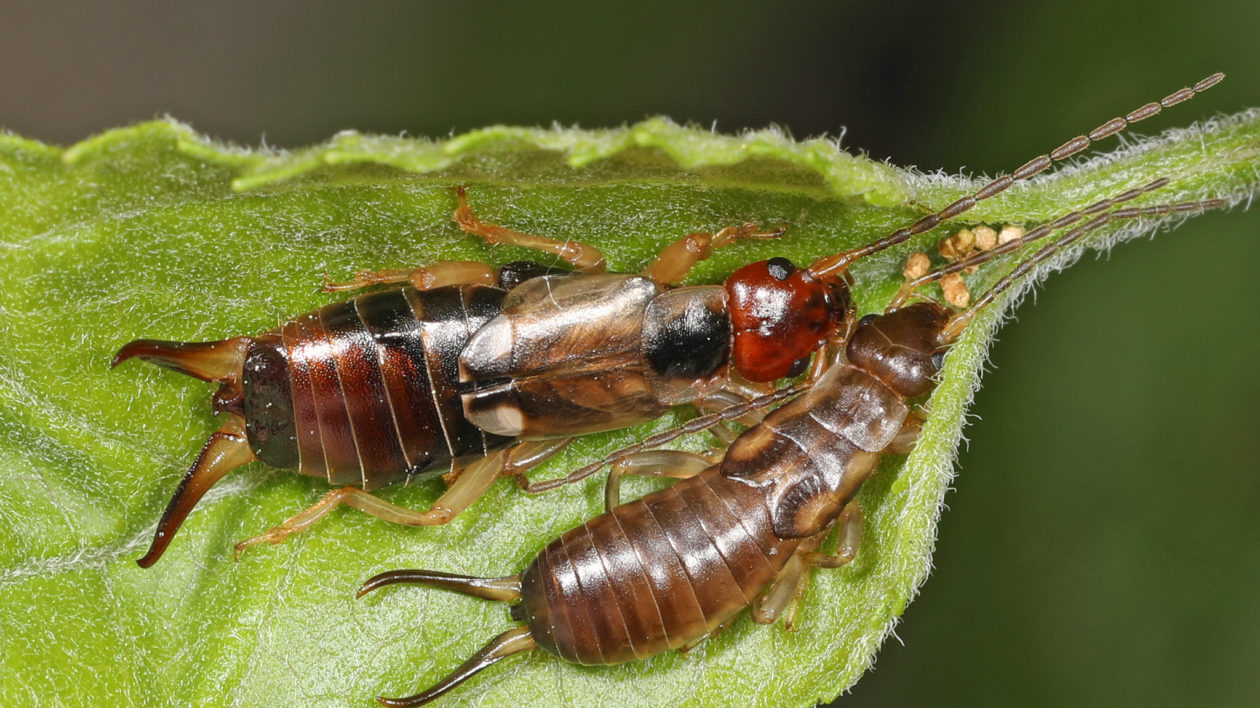
Excellent Mothers
Yes, those pincers are kind of creepy (more on them in a bit). And I admit, it’s difficult to find earwigs endearing. But consider this: they’re very protective and meticulous mothers.
It’s true—and very rare among insects (especially non-social insects). Mother earwigs carefully guard their eggs, tending them for weeks. They move their eggs to a safe spot. Researchers have tried putting small wax balls in their midst. The earwig will initially care for them, but the scent is wrong, so they are removed from the nest.
Earwigs also groom the eggs, removing potentially harmful fungi. A paper published in the journal Behavioral Ecology found that this grooming not only removes the fungi, but also applies a chemical to the egg’s surface that has anti-fungal properties.
This maternal care extends once the eggs are hatched. In some species, the mother continues to care for the earwig nymphs and supplies them with food, greatly increasing their chances of survival in the “outside world.” Most species stick with their mothers until they have molted twice. Every researched species of earwig has exhibited maternal care, according to the Journal of Insect Science, although the methods and level of care vary. And one species takes it to an extreme…
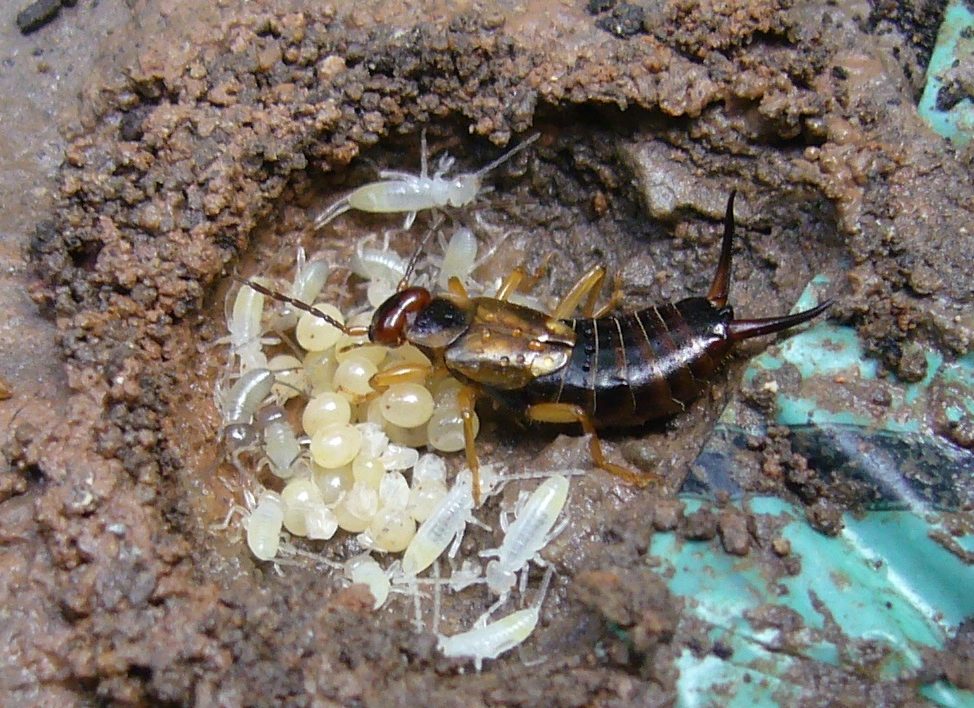
Eating Mom
Females of the hump earwig guard their young until they are old enough to take care of themselves. Anthropomorphically, we might imagine some sense of gratitude, perhaps an insect version of a hug or Mother’s Day card. Nope. Young hump earwigs get ready to leave the nest by turning mom into dinner. This practice of eating one’s mother, practiced by other insects as well, is called matriphagy.
From an insect’s point of view, this strategy makes sense. The mother is a ready source of calories, and even better the young earwigs don’t have to leave the safety of the nest to dine. A paper published in the Journal of Ethology demonstrated that this provisioning, as the researchers put it, leads to increased survival once the earwigs depart. Mom pays the ultimate price, but the next generation is fat and healthy when they face the harsh world outside the nest.
Earwig Love
Earwig courtship is reported to be a rather involved affair, and includes use of the pincers. According to the Living with Insects blog, males use their pincers (called cerci) to compete over females.
As the author notes:
“The male courts a female by tapping and stroking a female on the abdomen with his forceps and presenting them to the female. Females nibble the forceps, presumably receiving some chemosensory input to help them decide.”
Male earwigs have supersized genitalia, called virga. In some species, the rod-like virga is as long as the male’s body length, and twice as long as the female’s. Research by Yoshitaka Kamimura of the Tokyo Metropolitan University suggested that these elongated virga may do more than inseminate. When the male extracts the virga, which in one species contains a “brim like tip”, it may clean out sperm from other males that have previously mated with the female.
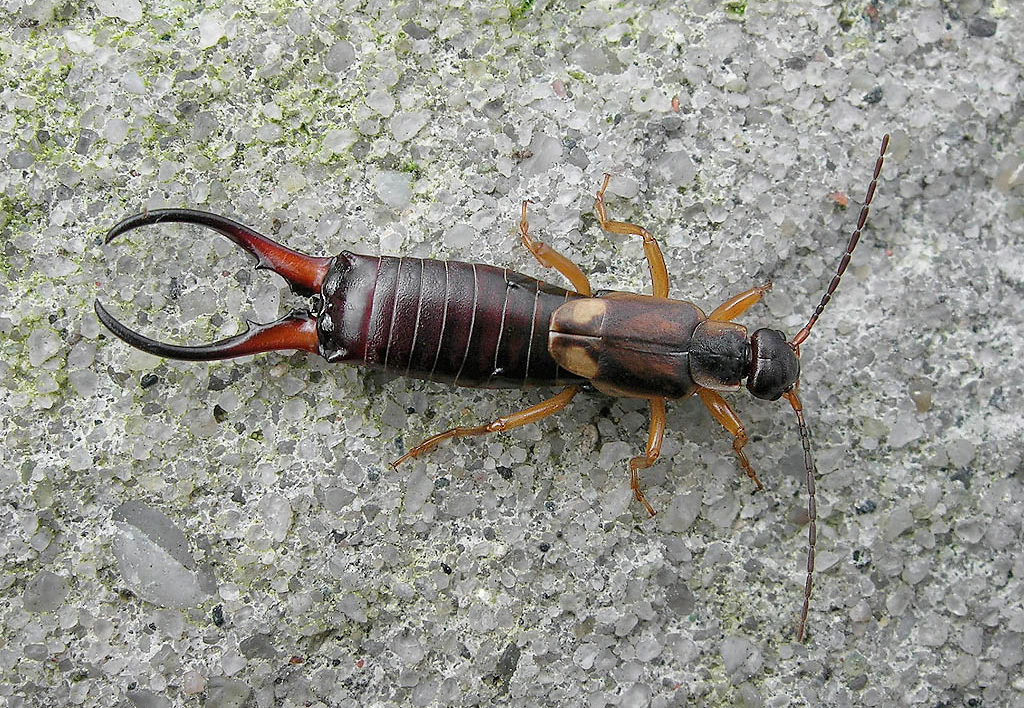
About those Pincers
Earwigs are not unattractive insects (they’re really not, look closely). But those pincers. It makes them look more frightening than they really are. In truth, the pincers of the common European earwig do little damage. I have picked up hundreds of them this summer; my backyard chickens find them to be a tasty snack. While I’ve been pinched repeatedly, I have never felt the slightest bit of pain.
The pincers, called cerci, are notably curved in males and straight in females. As noted previously, they can be used in courtship, both to battle opposing males and also to grasp a female while mating.
Scent of an Earwig
While the pincers may not bother you, the earwig’s scent is truly objectionable. Not all earwigs do this, but some emit a foul-smelling liquid as a defensive strategy. When I pick up the local earwigs, I notice an acrid smell on my fingers, not unlike a bad battery. The chickens don’t seem to mind.
This may be just one of the reasons vineyards don’t want earwigs around. Research found that 10 or more earwigs per kilogram imparted a significant taste to the wine.
The same paper also found that earwig feces also affect wine quality. As reported in the Living with Insects blog, “as little as 0.6 g of earwig feces per kilogram produce an off flavor variably described as ‘animal, ‘reductive’, “vegetal”, ‘acidic’, ‘bitter’ and ‘tannic’.”
If you have not already noticed, earwig research is a very, very strange field.
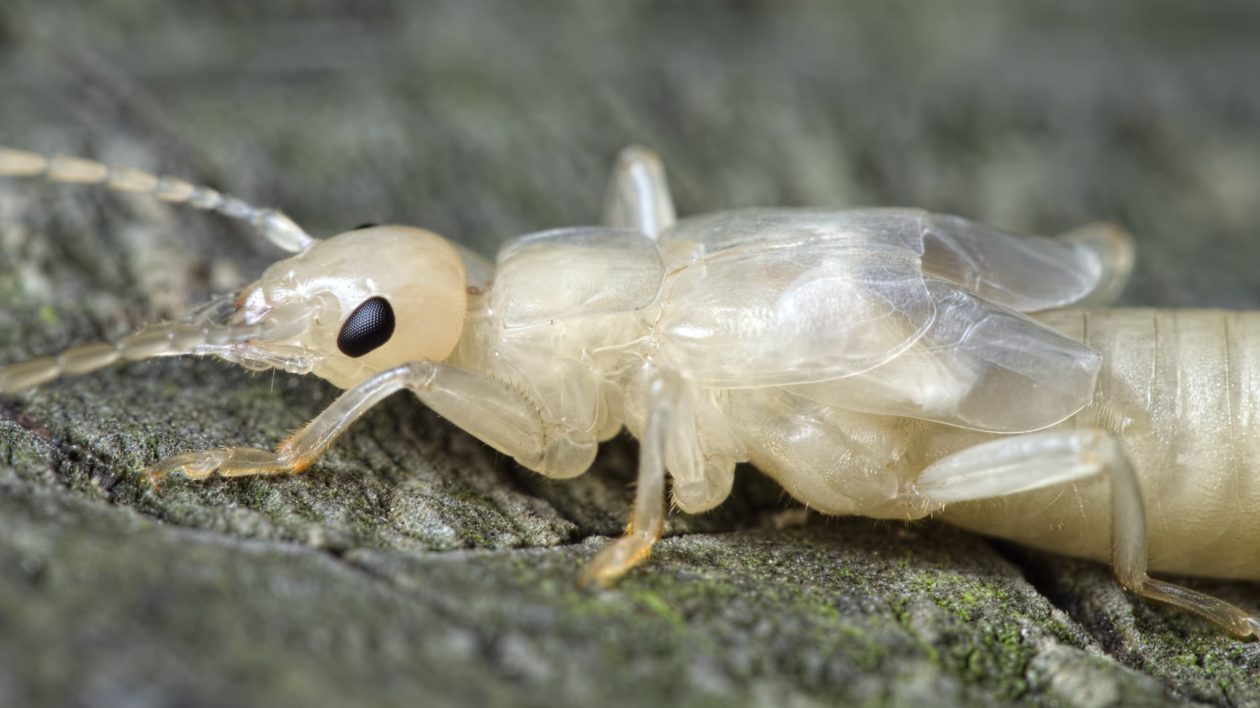
The Giant Earwig
The giant earwig (also known as the St. Helena earwig) was the largest of all, reaching more than three inches in length—including very formidable pincers.
This earwig was found only on the small St. Helena Island in the Atlantic. It was a textbook example of the well-documented evolutionary trend where some species become super-sized on islands. It also, sadly, is a textbook example of the vulnerability of island wildlife.
The giant earwig has not been found alive since 1967. As is the case with many insects, its decline and eventual disappearance were scarcely noted. But the reasons appear to be the usual list that cause island species to disappear: invasive predators, loss of habitat and possibly even collection of the stones that offered earwig hiding spots.

The Earwig in Your Ear
There is no shortage of theories as to the origin of the earwig’s name. “Ear” is a part of this insect’s common name in several languages. Some have suggested the pincers make them look like earrings, and others that their wings resemble ears. But it seems most likely this ties to a bit of folklore: the old story goes that insects climb into the ear, and then burrow into the brain. Where they lay eggs and/or cause insanity.
Hopefully, I don’t have to state that earwigs don’t burrow into brains. And, as many sources note, earwigs are unlikely to climb into your ear. However, “unlikely” is different from “never.”
Earwigs are nocturnal. They take refuge in cozy, dark environments, like building cracks, lettuce leaves, and under shoes. Would an ear make a nice refuge if an earwig stumbled across it? Perhaps.
In fact, numerous reports—some published in the scientific literature—verify that this horror does indeed happen.
A letter in the Western Journal of Medicine provides details of one found in the ear of the author’s daughter, initially thought to be a dirty chunk of ear wax. As the letter details: “My brief discussion with her on the importance of proper hygiene was interrupted when I saw the form move. Then, bathed in brilliant illumination from the otoscope, a female earwig…cautiously emerged, to the relief of insect, child and father.”
The letter details other incidents in which earwigs were indeed found in ears. Some reports claim the pincers can pierce the ear drum. Whatever the case, having a large insect in one’s ear cannot be a pleasant experience. A nightmarish version of this scenario was even explored in a horror episode by Rod Serling, of Twilight Zone fame.
While I don’t really enjoy earwigs in the garden, it’s undoubtedly better than in my ear. And I have to admit, the research (unusual as it may be) gives me new respect for these insects. Take a closer look, and even household pests are fascinating creatures.
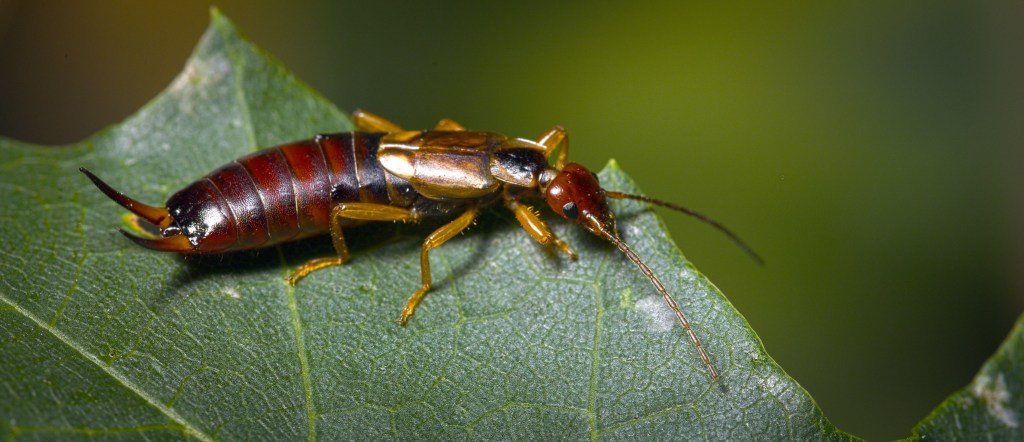



Unfortunately, human invasion is slowly and inevitably eroding the abundance of insects and, once gone, humans will soon follow. Instead of spurning out little fellow creatures, we really need to start taking more care of them for the sake of ourselves, if for nothing else.
I’m doing a report on earwigs!
I actually had an earwig in my ear !!
I thought that I was loosing my equilibrium (I’m in my 80’s) and experiencing a quick downfall of my health!!
After a couple of months..yes months !! And after many tries of cleaning my ear with a q-tip …I thought I was hearing ear hairs scratching and used a rubbing alcohol soaked q-tip to clean my ear…an object FELL OUT OF MY EAR…..you guessed it correctly!!! An earwig !!
I looked at the animal and verified by google and now have told you an actual event 😳
As children we often spied earwigs nestling in my mums gladioli. We played a game wherein we went as close as we dared to the earwig. I remember cautiously liking them.
Could earwigs actually have a hidden intelligence or society that we are unaware of, leading them to be the subject of myths and legends throughout history?
I just went to use my inhaler and didn’t think anything about it I inhaled very deeply and felt something in the back of.my throat that immediately made me cough harshly to get it out. It was an ear wig! Now I’m freaking out if there was more than on of them in there that I inhaled into my lung bc I already have enough lung problems I dont need an earwig hatching eggs or something in my lungs
Ya’ll are sick!
As a child I saw the twilight program and I had a deep fear of them. I don’t think I ever saw an earwig except In my nightmares
I’m sure this happens all the time but content from this article has been stolen by another website. I won’t name the url because it may (rightfully) trigger the spam filter but it shows up on the first page in a google search for “earwig symbolism” and has the word church in the url.
I was already skeptical because a lot of it seemed like one of those fake sites that’s loaded with ads and stolen/useless content, then I came across this line: “And I admit, it’s difficult to find earwigs endearing” and it sounded totally out of place so I googled that and ended up here.
I mean, those weird sites pop up all the time and I wouldn’t be surprised if being plagiarized is one of the risks of running a blog, but just wanted to leave a note.
And I have to say I love earwigs! Sometimes I watch one for a few minutes at a time and just see what it’s up to. They’ve shown up again now that the season has changed and I say welcome back. They’re great for tiny cleanup, especially the underside of leaf piles when it’s been rainy and no one has gotten out to clean up yet. I just love them.
I just had an ear wig on my mouth guard. I had the light off and put the mouth guard into my mouth. It felt strange. I turned on the light and took out the mouth guard to find I had also put an ear wig into my mouth. I still have the urge to vomit. Never putting my mouth guard in with the light off ever again.
That was an enjoyable article sir, illiciting a few chuckles even. Last statement, indeed: fascination can occur among ordinary “pests”, (who are nearly innocuous it turns out in the scheme of things).
Your input here enriched my morning of seeing if there was anything redeemable or remotely intriguing about who I voted must be one of the least interesting insectages ever. Duly corrected, I shall now regard them with more respect than dismissal.